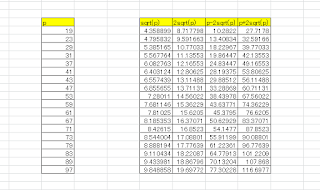C/ΘZ[i]
C is complex multiplication, and Z[i] is the Gaussian integer ring, and θ is any non-zero complex number.
You can see always the Gaussian integer as module in Elliptic curves.
Y^2=X^3-X+1
59 is the Gaussian prime.
The Gaussian prime must be symmetry in any Elliptic curves.
2=(1-i)(1+i)=(-1-i)(-1+i)
This is the norm. 1±i,-1±i are Gaussian primes.
±3,±3i,5=(2-i)(2+i)=(1-2i)(1+2i),±7,±7i,13=(2+3i)(2-3i)=(3+2i)(3-2i),17=(4-i)(4+i)=(1+4i)(1-4i)
Y^2=4X^3-X
59 is the Gaussian prime.
I think that it is fractal.





